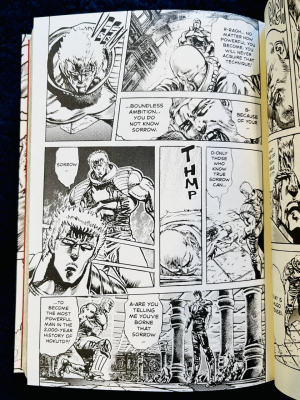This past Saturday, I played through the walking sim Tacoma. As in other walking sims, and many other games besides, one of the things I could do as the player was browse bookshelves. Tacoma takes place aboard a space station where something had gone wrong, and there are six crew members, each with their own quarters and set of shelves. Given how much one does or doesn’t know about the books on offer can tell the player—or not—a little bit more about these characters. I found novels, nonfiction books about a wide range of subjects, and a handful of names and titles I was familiar with. My favorite find was a set of Alice Munro titles, including the short story collection Too Much Happiness; I read the title story when it first appeared in Harper’s and it’s remarkable.
While examining all these shelves, I began to wonder: if I was a character on a video game spaceship, what books would be in my quarters? I decided to come up with a few books that I’d bring along on my video game space voyage. My current reading habits lean heavily toward multi-volume manga, so with one exception (in a nod to that Alice Munro set), each of these is a single book.
- Akira by Katsuhiro Otomo – the exception. Six thick volumes of shouty young men, political intrigue, metaphysics, and gorgeous architectural disaster. One of my two favorite manga of all time.
- Azumanga Daioh by Kiyohiko Azuma – this would have to be the single-volume omnibus edition, though I personally own it broken up into its original four volumes. A lighthearted and cozy school comedy, highly influential “moe” work, and my other favorite manga of all time.
- The Great Gatsby by F. Scott Fitzgerald – I’ve read this three times: once as assigned reading in high school, again in college, and the third for my own enjoyment. A true “Great American Novel”, and just a good read.
- The Little Prince by Antoine de Saint-Exupéry – my favorite book when I was a kid. Would be especially fitting for a sci-fi bookshelf like those in Tacoma, given that the title character resides on an asteroid.
- Add Toner by Aaron Cometbus – a collection of excerpts from the beloved punk/memoir/essay zine Cometbus, which I’ve been following on and off for roughly thirty years now. It’s either this, Despite Everything (the first Cometbus compilation), or a pile of Cometbus back issues, including the ones that contain “Double Duce” and “In China with Green Day”.
Are there other books I’d bring along? Probably, but I’d have to think on those a bit more. These five, however, are my must-haves.


